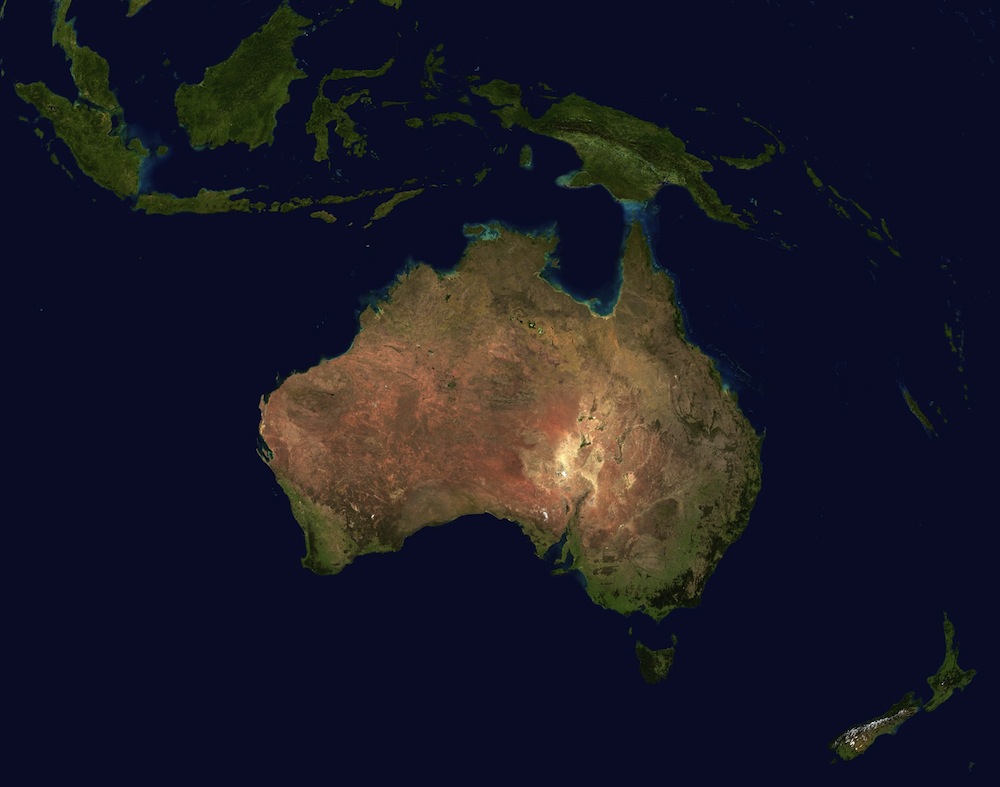Australia Wasn't Found By Accident, Study Suggests

Australia's colonization may have been an organized affair rather than an accident, a new analysis suggests.
Some 50,000 years ago, aboriginal human settlers arrived on the continent, but how many people it took to found Australia's population is unknown. The new study, published Tuesday (April 23) in the journal Proceedings of the Royal Society B, suggests that about 1,000 to 3,000 individuals originally landed on Australia's shores.
"This is largely speculative, but I think this suggests something more than accidental colonization by a small group on a raft of vegetation or other unplanned voyage," study researcher Alan Williams, a doctoral candidate at The Australian National University, wrote in an email. "For me, this suggests a deliberate attempt at exploration (if not migration) more akin to those we see in the recent past from Hawaii and other Pacific islands." [Gallery: One-of-a-Kind Places on Earth]
Arriving in Australia
Europeans did not discover Australia until 1606, when Dutch navigator Willem Janszoon spotted the Cape York Peninsula in Far North Queensland. A few landings and mapping expeditions followed, but the indigenous people of the continent remained largely undisturbed until the British colonized it in the late 1700s, setting up a penal colony in New South Wales in 1788.
Even the indigenous, or aboriginal, population in 1788 is a bit of a mystery, with estimates of the population ranging from 250,000 to 1.2 million. Further back, the story of Australia's human population is shrouded, though gene studies suggest a relatively large founder population would have been necessary to result in the genetic diversity seen today. It's not clear whether the original inhabitants of Australia multiplied and spread across the continent rapidly or remained small in number until the last 5,000 years or so, Williams told LiveScience.
Williams approached the question by using 4,575 radiocarbon dates from 1,750 sites around the continent. Radiocarbon dating works by measuring variations in carbon called isotopes that change predictably with age.
Sign up for the Live Science daily newsletter now
Get the world’s most fascinating discoveries delivered straight to your inbox.
Williams assumed that more sites dating to a certain time reflected a larger population at that time. (It's possible, Williams said, that this assumption is flawed; though he doesn't believe it himself, some researchers have suggested that a small group of highly mobile people might account for spikes in the number of archaeological sites seen in a given time, without any population growth.)
Climate and colonization
Using this large database of dates, Williams reconstructed a timeline of Australia's population in prehistory. Assuming a single wave of colonization 50,000 years ago, he found that Australia stayed sparsely populated until about 11,000 years ago. The population then started increasing gradually to reach a peak of about 3 million individuals 500 years ago. (Today, 23 million people live in Australia.)
The data then show a decline to about 700,000 to 1 million individuals at the time of European contact. The reason for the drop is still unclear: It could be due to a quirk in the database, or it might reflect a real decline. In the 1700s — before major European intrusion into Australia — Indonesian sailors, known as Macassans, ventured to Australia to hunt sea cucumber, and that cultural contact may have brought disease that hit the indigenous population hard, Williams said.
Australia’s population history shows a number of dips and spikes, some of which correspond with known climate changes, Williams said. Among the most pronounced population changes is a major decline from 21,000 years ago to 12,000 years ago, when the population dropped by 60 percent. This decline may have been due to the Last Glacial Maximum, when ice sheets were at their most extensive point and Australia cooled and dried, Williams said. (This is also when the current Great Barrier Reef formed.) It’s likely that fewer than 500,000 people lived in Australia at that time, so the effect wasn’t quite as pronounced as it would be today, when a 60 percent decline in population would correspond to the loss of 14 million Australians today, he said.
The results raise new questions, Williams said, including what prompted the gradual increase in population about 11,000 years ago. Given that the founding population would have numbered in the thousands, the results also require a look at what might have motivated an organized exploration and colonization effort 50,000 years ago.
"Was it climatic? Was it cognitive?" Williams said. "It looks less like an accidental discovery."
Follow Stephanie Pappas on Twitter and Google+. Follow us @livescience, Facebook & Google+. Original article on LiveScience.com.

Stephanie Pappas is a contributing writer for Live Science, covering topics ranging from geoscience to archaeology to the human brain and behavior. She was previously a senior writer for Live Science but is now a freelancer based in Denver, Colorado, and regularly contributes to Scientific American and The Monitor, the monthly magazine of the American Psychological Association. Stephanie received a bachelor's degree in psychology from the University of South Carolina and a graduate certificate in science communication from the University of California, Santa Cruz.









